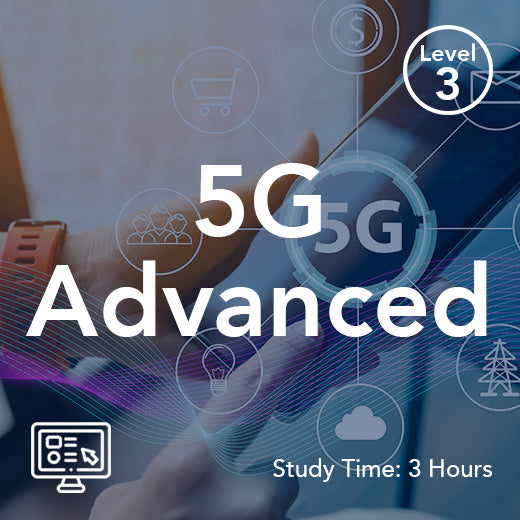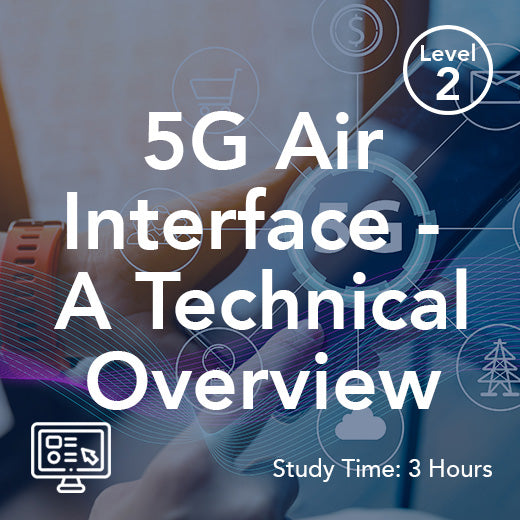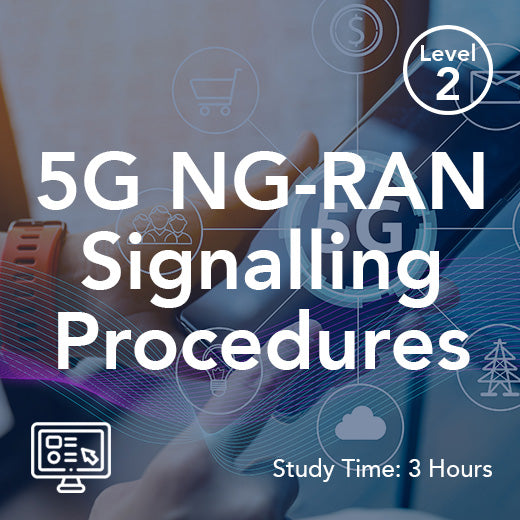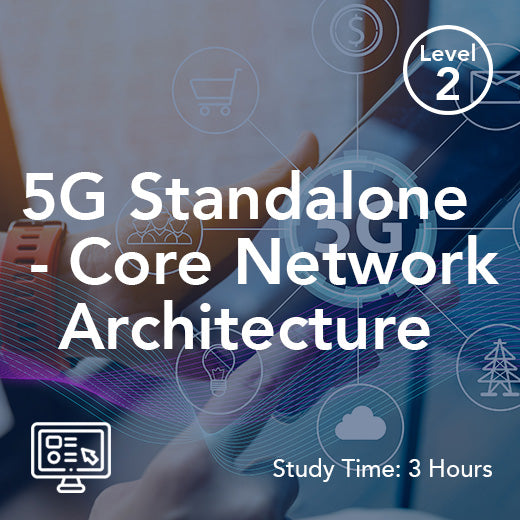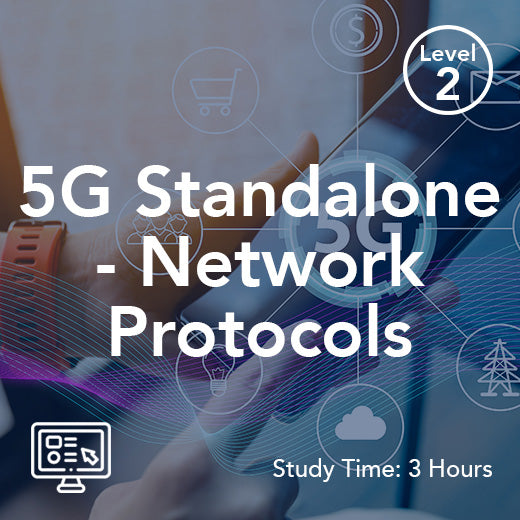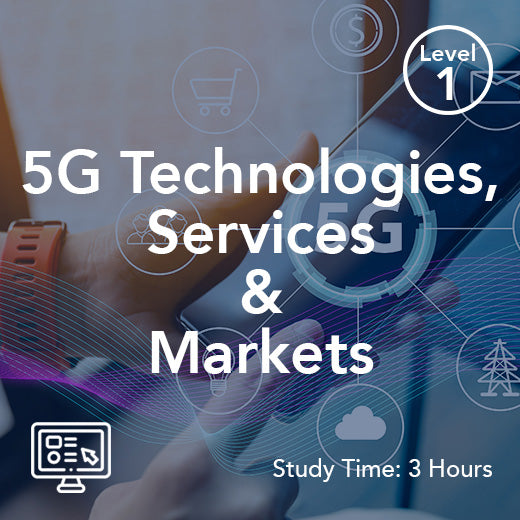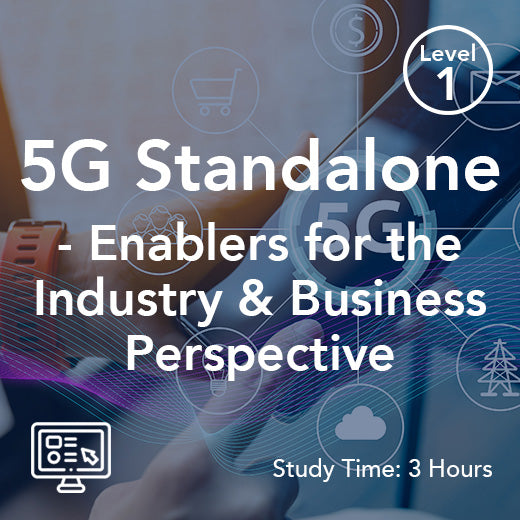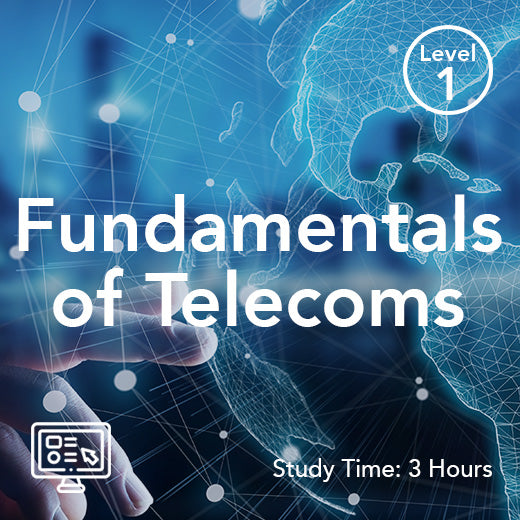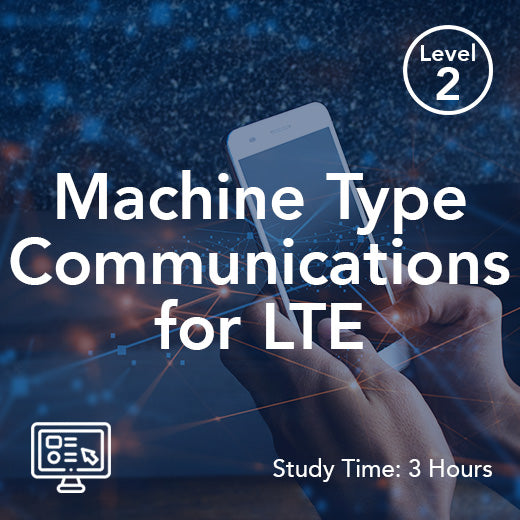Understanding 5G NR Frequency Bands: A Simple Guide for Everyone
- , by Stephanie Burrell
- 21 min reading time
In the ever-evolving world of technology, the term ‘5G’ has become a buzzword, promising faster internet speeds and improved connectivity. At the heart of this new generation of mobile networks are the 5G NR (New Radio) frequency bands, which play a crucial role in how data is transmitted and received. 5G New Radio is the foundational standard for 5G wireless networks, supporting fast, low-latency, and high-capacity data transmission that enables a wide range of applications. Understanding these frequency bands can seem daunting, but it is essential for grasping how 5G technology works. This guide aims to break down the complexities of 5G NR and different frequency bands in a straightforward and relatable manner, making the information accessible to everyone, regardless of their technological expertise. Whether you’re a tech enthusiast or just curious about the future of mobile networks, this guide will provide you with a clear and confident understanding of the 5G NR frequency bands.
Introduction to 5G NR
What is 5G NR?
5G NR, or New Radio, is the global standard for a unified air interface in 5G networks. It was developed by the 3rd Generation Partnership Project (3GPP) to meet the demands of new mobile communications. 5G NR is designed to support a wide range of frequencies, from low-band millimeter wave and frequencies below 1 GHz to high-band millimetre wave frequencies above 24 GHz. This flexibility, enabled by 5G NR's flexible architecture, allows for scalability and supports diverse applications and deployment scenarios. As a result, 5G NR can deliver enhanced mobile broadband, ultra-reliable low latency communications, and massive machine-type communications. Unlike previous generations, 5G NR is more efficient in spectrum usage, which means more data can be transmitted over the same bandwidth. Additionally, 5G NR supports advanced technologies like beamforming and massive MIMO, enhancing network capacity and coverage. 5G NR also employs orthogonal frequency division multiplexing (OFDM) as its primary radio access technology, which improves spectrum efficiency and reduces interference.
Key features of 5G NR include flexible numerology, carrier aggregation, ultra-reliable low latency communication (URLLC), and support for massive MIMO. These key features differentiate 5G NR from previous standards and enable advanced applications across various industries.
Understanding 5G NR is key to appreciating how 5G networks can offer such significant improvements over previous generations of mobile technology.
Importance of Frequency Bands
Frequency bands are pivotal to the functionality and performance of 5G networks. They determine how data is transferred and influence the speed, coverage, and capacity of the network. In simpler terms, frequency bands are like the lanes on a motorway. Low-frequency bands, similar to wider lanes, cover larger areas and provide better penetration through buildings, making them ideal for rural and suburban areas. High-frequency bands, akin to narrower lanes, can carry more data at much faster speeds but over shorter distances, which suits densely populated urban environments. Mid-band frequencies strike a balance between speed and coverage. In 5G, these frequency bands are grouped into two different frequency ranges: FR1 (sub-6 GHz) and FR2 (mmWave). Each of these frequency ranges supports different deployment scenarios, coverage, and data speeds, allowing network operators to tailor their services according to the specific needs of different areas and user demands. Understanding the importance of these bands is crucial for recognising how 5G can deliver improved connectivity and why it is a game-changer in mobile communications.
Evolution from Previous Generations
The transition from previous generations of mobile networks to 5G NR represents a significant leap in technology. Each generation of cellular networks has introduced new capabilities: 1G brought voice calls, 2G introduced text messaging, 3G enabled internet access, and 4G improved data speeds for mobile broadband. However, 5G is not just about faster speeds; it’s about connectivity that supports a diverse range of applications. 5G NR builds on the foundation of 4G LTE but offers much more, including lower latency, higher reliability, and the ability to connect a massive number of devices simultaneously. This evolution is driven by the need to support emerging technologies such as the Internet of Things (IoT), autonomous vehicles, and augmented reality. By utilising a broader range of frequency bands and advanced technologies like network slicing, 5G NR is set to transform industries and everyday life, making it a pivotal advancement in mobile network evolution. The use of higher frequencies in 5G NR requires a greater number of smaller, building-mounted nodes to ensure effective coverage and capacity.
Understanding Frequency Bands
Low, Mid, and High Bands
5G NR frequency bands are categorised into low, mid, and high bands, each serving different purposes. Low bands operate below 1 GHz and are ideal for broad coverage and deep penetration into buildings, making them suitable for rural and suburban areas where coverage is more important than speed. Mid bands, ranging roughly from 1 GHz to 6 GHz, offer a balance between coverage and capacity, providing faster data speeds than low bands while still covering significant distances. These bands are crucial for urban and suburban deployments where both speed and coverage are needed. High bands, often referred to as millimetre waves, operate above the frequency range 2 to 24 GHz and offer extremely high data rates. These high bands provide higher bandwidth, supporting increased data capacity and lower latency for spectrum-intensive applications. However, they have limited range and are affected by obstacles, making them suitable for densely populated urban areas where high-speed internet access is essential. Understanding the role of each band is vital for appreciating how 5G networks can meet diverse connectivity needs effectively.
Key Differences and Uses
The key differences among low, mid, and high frequency bands in 5G NR lie in their coverage, speed, and capacity. Low bands are primarily used for extensive coverage and are adept at penetrating obstacles like walls, making them ideal for broad, reliable connectivity in less densely populated areas. Mid bands, on the other hand, balance speed and coverage, providing optimal performance in urban and suburban zones where both are crucial. They are often used for mobile broadband services as they can support higher data rates than the low band 5g+ bands. High bands, or millimetre wave frequencies, offer exceptionally high speeds and data capacities. However, their range is limited, and they are more susceptible to interference from physical obstructions. These bands are typically employed in urban environments and for specific use cases like fixed wireless access and hotspots, where ultra-fast data rates are required. High bands are particularly suited for applications that require high data throughput, such as enhanced mobile broadband in dense urban environments. Each band has distinct uses, tailored to meet diverse network demands and geographical challenges.
Frequency Band Designations
Frequency band designations in 5G NR are vital for organising the spectrum and ensuring efficient communication. These designations are standardised by international bodies like the International Telecommunication Union (ITU) and the 3rd Generation Partnership Project (3GPP). They are identified by numeric codes, each representing a specific frequency range 1 amount of frequencies. For instance, the n78 band covers frequencies from 3.3 GHz to 3.8 GHz, a part of the mid-band spectrum. These designations help operators and device manufacturers ensure compatibility and interoperability across different networks and regions. User equipment, such as smartphones and IoT devices, must support the designated frequency bands to ensure seamless connectivity across different networks. Each band is allocated based on factors like propagation characteristics and regional demand. This standardisation facilitates global roaming and ensures that devices can seamlessly switch between networks. Additionally, these designations allow for efficient spectrum management, reducing interference and optimising bandwidth usage. Understanding these designations is crucial for recognising how complex network infrastructures operate cohesively in delivering 5G services worldwide.
5G NR Spectrum Allocation
5G NR spectrum allocation is a foundational element in the rollout and operation of next generation mobile networks. The way frequency bands are allocated directly influences a network’s ability to deliver the high data rates, low latency, and high reliability that define fifth generation wireless communication. Spectrum resources are essentially the “lanes” through which data travels, and careful allocation ensures that these lanes are wide enough and clear enough to handle the massive amounts of data modern applications require. When assigning frequency bands, regulators and network operators must consider existing infrastructure, potential interference, and the growing demand for different services. The right allocation strategy allows networks to support everything from enhanced mobile broadband to mission critical applications, ensuring users experience the full benefits of 5G technology.
How Spectrum is Assigned
The process of assigning spectrum for 5G NR is a careful balancing act between maximizing efficiency and minimizing interference. Most 5G networks rely on licensed spectrum, which is allocated by government agencies through auctions or direct assignments. This ensures that each network operator has exclusive access to specific frequency bands, reducing the risk of interference and supporting high quality service. In addition to licensed spectrum, some frequency bands are designated as unlicensed, allowing multiple networks or devices to share the same spectrum resources. A key innovation in 5G is dynamic spectrum sharing (DSS), which enables operators to use existing infrastructure to support both 4G and 5G services on the same frequency bands. This approach makes it possible to quickly expand 5G coverage without waiting for new spectrum to become available, making the most of current networks and spectrum resources.
Global and Regional Differences
Spectrum allocation for 5G NR varies widely around the world, shaped by local regulations, existing infrastructure, and the availability of frequency bands. Some countries have prioritized the allocation of millimeter wave (mmWave) spectrum, which supports ultra-fast data rates and is ideal for dense urban environments. Others have focused on sub-6 GHz frequencies, which offer a balance of coverage and capacity and are better suited for broader network deployments. These regional differences mean that devices and networks must be designed to operate across a range of frequency bands, ensuring compatibility wherever they are used. For network operators and device manufacturers, understanding the unique spectrum landscape in each region is essential for delivering seamless connectivity and meeting the diverse needs of users worldwide.
Impact on Network Performance
The way spectrum is allocated has a direct impact on the performance of 5G NR networks. Access to wide, contiguous frequency bands—especially in the mmWave range—enables networks to deliver ultra high data rates and lower latency, supporting applications like virtual reality, remote surgery, and autonomous driving that require real time control and high reliability. However, these high frequency bands often require a denser network of base stations to maintain coverage, especially in challenging environments. In contrast, lower frequency bands provide better coverage and penetration, making them ideal for rural areas and indoor environments, but may not support the same peak data rates or ultra low latency as higher bands. Network operators must carefully plan their spectrum allocation to balance coverage, capacity, and performance, ensuring that their networks can meet the connectivity requirements of a wide range of services and users.
Deployment Modes and Strategies
The deployment of 5G NR networks involves a range of strategies and modes, each tailored to the unique needs of different regions, user demands, and existing infrastructure. Choosing the right deployment mode is crucial for network operators aiming to deliver reliable, high-performance services while managing costs and leveraging current assets. By understanding the available deployment modes and how they interact with existing infrastructure, operators can optimize their networks for enhanced mobile broadband, ultra reliable low latency communications, and massive machine type communications.
Non-Standalone vs Standalone Deployments
5G NR can be deployed in two main modes: non-standalone (NSA) and standalone (SA). Non-standalone deployments build on existing LTE infrastructure, using the 4G core network to support 5G radio access technology. This approach allows operators to roll out enhanced mobile broadband (eMBB) services quickly and at a lower cost, making it ideal for areas where rapid expansion is needed. NSA deployments are particularly effective for delivering high data throughput and supporting multiple devices in urban environments, leveraging dynamic spectrum sharing to maximize the use of existing spectrum resources.
Standalone deployments, on the other hand, use a dedicated 5G core network and radio access technology, unlocking the full potential of 5G features such as ultra reliable low latency communication (URLLC), network slicing, and advanced edge computing. This mode is essential for mission critical applications like remote surgery, industrial automation, and autonomous driving, where low latency and high reliability are paramount. While SA deployments require more significant investment in new infrastructure, they offer greater flexibility, scalability, and support for next generation services. Network operators often choose a hybrid approach, deploying NSA in areas with high demand for enhanced mobile broadband and transitioning to SA in regions or industries that require the advanced capabilities of a dedicated 5G core network. This strategic deployment ensures that networks can meet the evolving connectivity requirements of both consumers and industries.
Benefits of 5G Frequency Bands
Enhanced Mobile Broadband Speed and Connectivity
The diverse range of 5G frequency bands significantly enhances speed and connectivity, setting it apart from previous generations. High-band frequencies, particularly in the millimetre wave subset of band spectrum, enable ultra-fast data speeds, often exceeding 1 Gbps. This capability is crucial for applications requiring high bandwidth, such as streaming high-definition video, virtual reality, and cloud gaming. Mid-band frequencies offer a substantial improvement in both speed and coverage compared to 4G, providing a reliable balance for everyday mobile users in urban and suburban environments. Low-band frequencies ensure widespread coverage, maintaining connectivity in remote and rural areas. The combination of these bands allows 5G networks to deliver seamless connectivity across varied geographical landscapes. The radio access network (RAN) in 5G plays a crucial role in connecting devices via radio connections and supports advanced features like network slicing and MIMO, enabling high performance and efficient spectrum utilization. It enables more consistent internet experiences, reducing latency and buffering. Enhanced connectivity also supports the burgeoning Internet of Things (IoT), allowing more devices to connect and communicate efficiently. This advancement propels industries and everyday users into a new era of digital interaction.
Improved Latency and Capacity
5G frequency bands play a pivotal role in reducing latency and increasing network capacity, essential features for modern digital applications. Latency, the delay before data transfer begins following an instruction for its transfer, is significantly lowered with 5G, often to as little as 1 millisecond. This improvement is crucial for real-time applications like online gaming, augmented reality, and autonomous vehicles, where even minor delays can impact performance. The higher capacity of 5G networks, facilitated by a wide range of frequency bands, allows more devices to connect simultaneously without degrading speed or performance. 5G NR also enables massive machine type communication (mMTC), providing reliable, low-power connectivity for a high density of devices, which is essential for IoT and smart city applications. This is particularly beneficial in densely populated areas or during large events, where network congestion is common. The combination of reduced latency, channel bandwidths and increased capacity also supports advanced applications such as smart cities and industrial automation, enabling faster response times and improved efficiency. 5G’s ability to handle massive data loads and maintain low latency is a cornerstone of its transformative potential.
Real-World Applications
The capabilities of 5G across frequency range and bands open the door to a multitude of real-world applications that were previously inconceivable. In healthcare, 5G enables the use of telemedicine and remote surgery, where low latency and high reliability are paramount. Robotic systems are increasingly used in healthcare, with 5G NR facilitating remote surgeries by allowing surgeons to operate with real-time video and data transmission. In the realm of transportation, it supports autonomous vehicles through faster data transmission, allowing for real-time navigation and safer driving experiences. The entertainment industry benefits from 5G through enhanced streaming services and virtual reality experiences, providing users with seamless, immersive content. In manufacturing, 5G facilitates smart factories, where connected machines communicate to optimise production processes and reduce downtime. 5G NR also reduces the need for human intervention in industrial automation by enabling remote operation and predictive maintenance. The agricultural sector also sees advancements with precision farming, using data from connected devices to improve crop management. Moreover, smart cities leverage 5G for better traffic management, public safety, and energy efficiency. 5G NR enhances urban living by enabling massive IoT deployments for real-time monitoring and improved infrastructure, supporting applications like smart traffic systems, energy management, and water systems. These applications demonstrate the transformative impact of 5G frequency bands across diverse sectors, reshaping how industries operate and interact with technology.
Challenges and Considerations
Interference and Signal Issues
Despite the advantages of 5G frequency bands, interference and signal issues present notable challenges. High-frequency millimetre waves, while offering fast data rates, are particularly susceptible to interference from physical obstructions like buildings and trees. This limits their range and requires a dense network of small cells to maintain coverage, especially in urban areas. Weather conditions, such as rain or fog, can also impact signal strength, affecting reliability. Additionally, the proliferation of devices connected to the network increases the risk of interference, necessitating sophisticated interference management strategies. The overlapping use of frequencies by different operators and technologies can further complicate the issue, requiring precise coordination and regulation to minimise conflicts. As 5G networks expand, addressing these signal and interference challenges is crucial to ensuring consistent and reliable connectivity. This involves a combination of advanced technological solutions and strategic infrastructure deployment to maximise the potential of high band spectrum for 5G while mitigating its inherent limitations.
Infrastructure Requirements
Implementing 5G networks necessitates significant infrastructure development, posing a challenge for widespread adoption. High-band frequencies, in particular, require a dense network of small cells due to their limited range and susceptibility to interference. This means deploying numerous small cell antennas closer together, often on street furniture like lampposts and buildings, to maintain seamless coverage in urban areas. Additionally, upgrading existing infrastructure, such as towers and fibre-optic networks, is crucial to support the increased data load and ensure low-latency connections. Enhancements to the physical layer are essential, as this foundational hardware and signal processing level enables the transmission of raw data and supports advanced 5G features like OFDM, MIMO, and spectrum sharing. This expansion demands substantial investment in both technology and logistics. Moreover, regulatory approvals and public acceptance can slow down deployment, as concerns about visual impact and health effects need to be addressed. Rural areas face unique challenges due to the lower population density, which can make infrastructure investment less economically viable. Balancing these infrastructure requirements with the need for widespread, equitable access is a key consideration for realising the full potential of 5G technology.
Regulatory and Compliance Factors
The deployment of 5G networks involves navigating complex regulatory and compliance landscapes. Spectrum allocation is a critical regulatory aspect, as governments and international bodies must allocate and license the necessary frequency bands for 5G use. This process can be lengthy and varies by region, potentially delaying network rollouts. Compliance with health and safety standards is another crucial factor, as public concerns about radiation exposure from increased antenna density must be addressed. Regulators impose strict guidelines to ensure that emission levels are within safe limits, requiring operators to adhere to rigorous testing and monitoring. Privacy and data protection regulations also come into play, as 5G networks handle vast amounts of sensitive data. Ensuring compliance with data protection laws, such as the General Data Protection Regulation (GDPR) in Europe, is essential to maintaining user trust and avoiding legal repercussions. Successfully navigating these regulatory and compliance factors is vital for the successful and sustainable implementation of 5G technology.
Future of 5G and Beyond
Emerging Technologies and Trends
As 5G networks continue to evolve, several emerging technologies and trends are set to shape their future trajectory. One such trend is the integration of artificial intelligence (AI) and machine learning, which can optimise network performance and resource allocation, enhancing service delivery and efficiency. Edge computing, which processes data closer to the source rather than relying on centralised data centres, is becoming increasingly important. This trend supports low-latency applications, such as autonomous vehicles and real-time analytics, by reducing data transmission times. Advancements in the data link layer and error correction mechanisms like hybrid automatic repeat request (HARQ) are also shaping the evolution of 5G, ensuring reliable and efficient data transmission. The rise of the Internet of Things (IoT) will see billions of connected devices leveraging 5G’s capabilities for seamless communication and smarter automation across industries. Additionally, the exploration of 6G, although still in its infancy, is beginning to take shape, promising even more revolutionary advancements in speed, capacity, and connectivity. These technologies and trends indicate a future where 5G and beyond will profoundly impact societal and industrial landscapes.
Global Implementation and Impact
The global implementation of 5G is a transformative process with far-reaching impacts across economies and societies. Countries worldwide are at various stages of deploying 5G networks, with leading nations like South Korea, the United States, and China spearheading the rollout. This widespread implementation is driving significant economic growth, potentially contributing trillions of dollars to global GDP over the next decade. 5G’s enhanced capabilities enable new business models and innovations, particularly in industries such as manufacturing, healthcare, and transportation. The global rollout of 5G involves careful management of both the user plane, which transports user data, and the control plane, which manages network operations, to ensure efficient and reliable service delivery. The technology is also poised to bridge the digital divide, improving internet access in underserved regions, although challenges remain in ensuring equitable distribution. As 5G networks mature, they are expected to catalyse advancements in smart cities, autonomous vehicles, and advanced robotics, further shaping the future of technology. The global impact of 5G will be profound, creating a more interconnected world and setting the stage for subsequent generations of wireless technology.
Preparing for Next-Gen Networks
As we look beyond 5G, preparing for next-generation networks involves strategic planning and investment in research and development. This preparation requires collaboration between governments, industry leaders, and academia to explore new technologies that will define future communications infrastructure. The focus is on developing advanced wireless technologies, such as terahertz communication and quantum networking, which promise unprecedented data speeds and security. Enhancing the existing 5G infrastructure with software-defined networking (SDN) and network function virtualisation (NFV) can also lay the groundwork for seamless transition. Optimizing subcarrier spacing in 5G NR will be crucial for future network flexibility and performance as new technologies are integrated. Additionally, addressing current challenges like energy consumption and network security is crucial to future-proofing these networks. As digital transformation accelerates, equipping the workforce with the necessary skills to manage and innovate within these next-gen networks is vital. By proactively addressing these areas, we can ensure that the next wave of network technology will meet the demands of a rapidly evolving digital landscape and continue to drive global connectivity and innovation.

